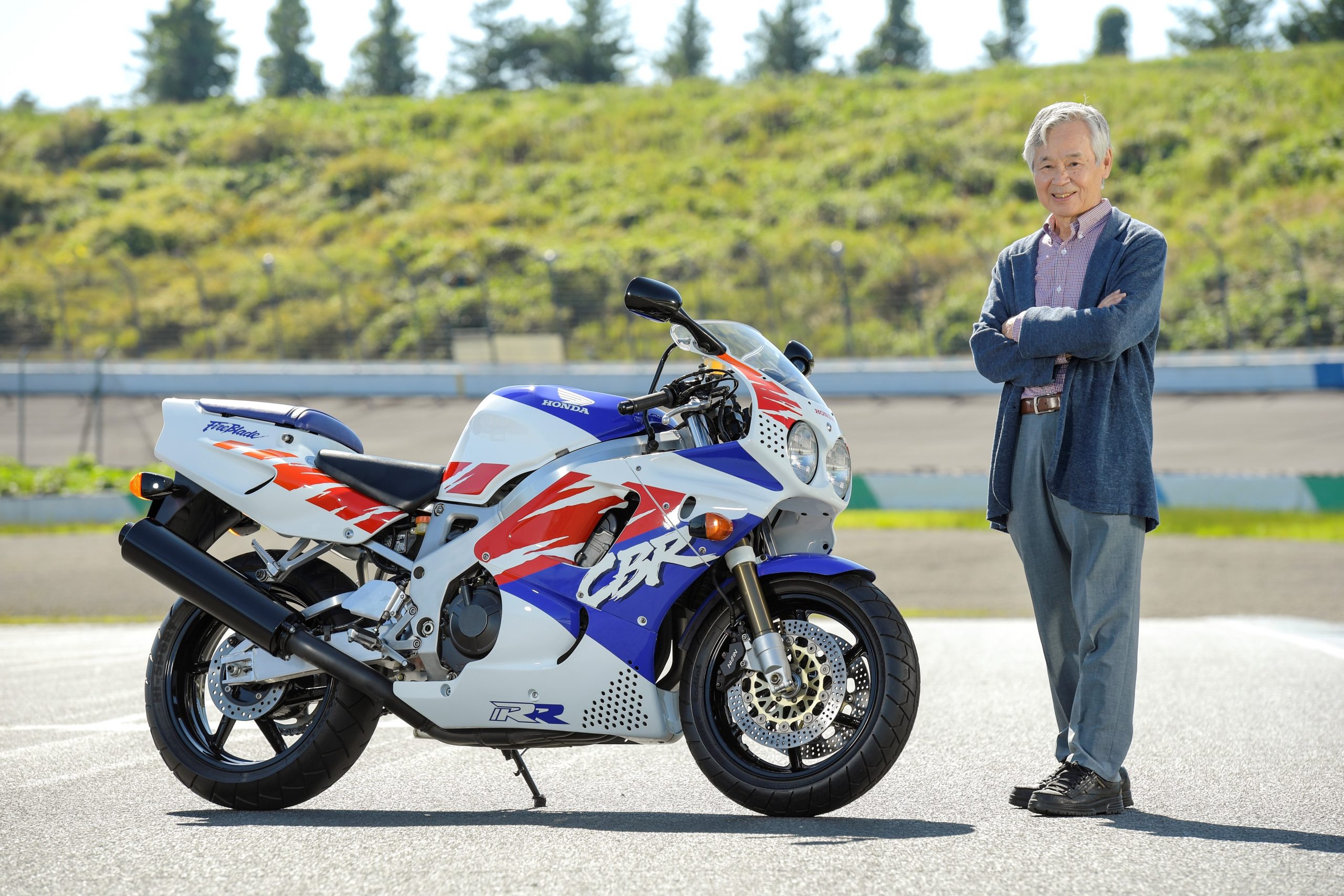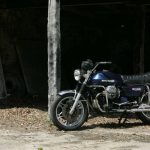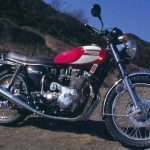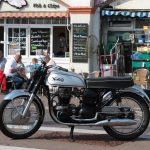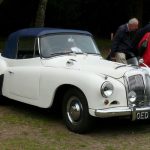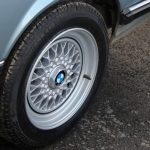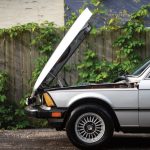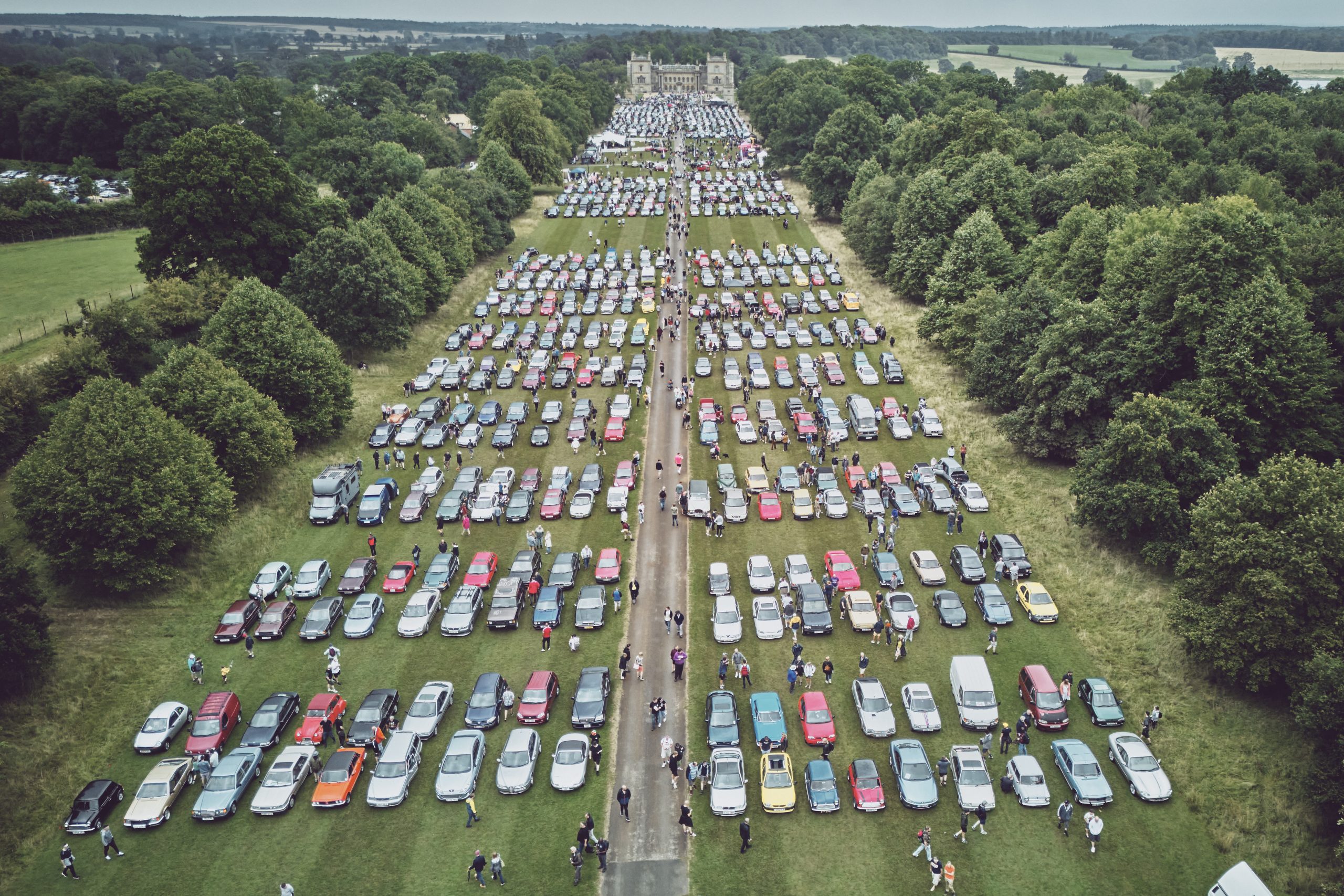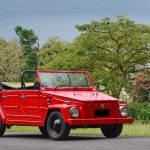Author: Alisdair Suttie
Photography: Honda
Until 1992, you could have a motorcycle that was rocket ship fast in a straight line or you could have one that handled, but not both unless you could afford a topflight race bike. The importance of the year 1992 for road riders is because that is when they could have their performance cake and handling to eat corners in the shape of the Honda CBR900RR Fireblade.
The Honda Fireblade, with a name taken approximately from the Japanese word for ‘lightning’, was the result of three years’ work led by Tadao Baba, chief engineer on the project. He wanted something with race-sharp handling and the performance of big 1000cc bikes that dominated the top tier of sports bikes at the time, including Honda’s own CBR1000F. The original plan was for a 750cc bike, but that would mean risking sales of Honda’s already popular VFR750, so Baba looked at what could squeeze into the frame of a 750-sized bike and came up with an 893cc inline four-cylinder motor. With 122bhp when it was launched in 1992, the Fireblade had the punch to live with its larger capacity rivals thanks to an obsessive focus on reducing weight.
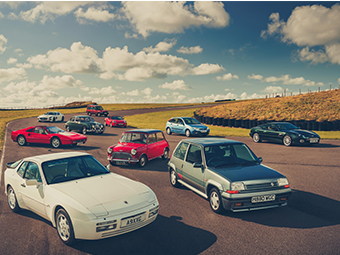
The Fireblade’s engine was not particularly radical, but Baba’s insistence on ‘mass centralisation’ was unheard of for a road bike. This put all of the heavy components – engine, gearbox, ancillaries – as close to the middle of the bike as possible. With its compact wheelbase of 1405mm and a dry weight of 185kg, the Fireblade’s spec read more like that of a race bike than one for the road, yet it was also a surprisingly comfortable machine to cover miles on.
Tuck in behind that fairing, complete with its drilled holes, and the first Fireblade was capable of 160mph to stay with the 1.0-litre bikes it was up against. When the corners arrived, the Honda left the rest trailing as it handled more like a 600c supersport bike, helped by the unusual 16-inch front wheel and tyre combo that endowed it with quick steering. When it went on sale, offered in red, white and blue or black and gunmetal grey, the Fireblade was an instant hit.
Other motorcycle manufacturers were left reeling from Honda’s audacity, but it didn’t take long for them to reply with their own improved machines. Arguably, it wasn’t until the first Yamaha R1 arrived in 1998 that the Fireblade was truly outgunned, but Honda had not been resting on its laurels in the meantime. For 1994, the R/S model arrived with an 893cc engine featuring a magnesium cylinder head and a slight increase in power to 124bhp. Performance remained the same, but there was improved front suspension with compression damping added. Just as importantly for buyers looking to trade in their earlier Fireblades, there was all-new bodywork with the ‘Foxeye’ front fairing, and there was the option of the iconic and now much sought-after Urban Tiger silver and orange paint scheme.
For 1996, the CBR900RR T/V gained a larger engine size, now up to 918cc with 128bhp to deliver a 173mph top speed. There was another new front fairing design plus a front mudguard with aerodynamic profile. Weight was reduced to 183kg and the wheelbase shrank to 1400mm, yet this Blade was regarded as a more comfortable and easier to live with bike.
To counter the criticisms of the Fireblade going soft and the threat of the new Yamaha R1, the CBR900RR W/X gained a 128bhp version of the 918cc motor and its dry weight was pared to 180kg. This nudged the top speed to 174mph to be the fastest of the 1990s Fireblades that shared the same basic engine and chassis design. Whether you fancy this, an early twin headlight model or the Urban Tiger, all of these original Honda Fireblades still offer sensational rider involvement with classic looks at affordable prices.
What’s a Honda CBR900RR Fireblade like to ride?
When it was launched, the Honda CBR900RR Fireblade sent shockwaves through the motorcycle industry. Here was a top class bike that handled like a 600cc machine thanks to its compact size, aggressive dimensions, and that 16-inch front wheel. Yet it was also comfortable, practical, and well made just as you’d expect of a Honda.
Today, much of this still holds true, but anyone used to modern sports bikes will find the performance of these earlier Fireblades swift rather than downright fast. Disappointing? Not a bit of it, thanks to the smooth, carburettor-fed power delivery, easy revving nature of the engine, and generous torque for this type of motorcycle. It means you can be precise and delicate when feeding on the power out of a wet corner or you can give it a big twist of throttle on a dry, straight road and the Honda will simply get on with it. The engine has a distinctive howl when revving hard through the standard exhaust silencer. Whether you want more noise is down to personal taste, but the standard set-up works well.
Where the engine is all buttery smoothness, the gearbox is typical of Honda of this period, so it needs a positive tap from your left toe to go up or down the ‘box cleanly. Make a lazy shift and it can resist, but the good thing about an engine with plenty of torque is you can also cruise along in a higher gear and still have enough clout for quick overtakes.
Bringing the Fireblade to a stop is never an issues so long as the brakes are in good condition. There’s good feel through the front end and brake lever, and the Honda never feels anything other than extremely stable. The same applies to the bike’s handling, where it offers plenty of feedback and has a planted poise that more modern bikes miss in comparison.
All of this is thanks to suspension that is plush over the bumps but never wallows in corners. Thanks to the low weight of the Fireblade next to contemporary rivals, it’s similar to a Lotus Elise where it handles brilliantly but also rides serenely over dips and crests. You also get decent protection from the fairing at higher speeds, though you will find the riding position puts a lot of weight on your wrists when riding in town. The mirrors are decent for this type of bike, again making the Honda more practical than most. Should you find yourself as pillion on one of these Fireblades, it’s no more or less accommodating than rivals of the same period. This means you’re perched up high with knees splayed, and there’s only a front strap rather than a rear handle to hang on to.
Lastly, a word on the 16-inch front wheel. It doesn’t make the Fireblade feel nervy or twitchy, though some owners change it for a 17-inch item from a VFR750 – it’s a straight swap. The main reason for changing to a 17-inch wheel is greater tyre choice, but there are good, modern tyres that fit the smaller rim and the market now favours the 16-inch wheel as buyers want originality.
How much does a CBR900RR Fireblade cost?
The W/X version of the Honda CBR900RR is the least loved nowadays, but that opens up the chance to own an earlier Fireblade at a keener price. Sound examples can be had from £2500, while £3500 will get you one that’s been very well looked after and £4500 bags you a minter.
The earlier models of Fireblade are now firmly in collectors’ sights, so expect to pay out £10,000 for a perfect 1992 N/P or later R/S bike. That can edge higher still for an immaculate and original bike, and the Urban Tiger paint scheme is in demand. Find one a Fireblade of this age that’s in cared for condition but you’re happy to use and £6500 is where you’ll be hunting.
For some, the T/V model of 1996 is the sweet spot as it has more power and a slightly less aggressive riding position for better comfort. For a clean, low mileage example, expect to pay £5000 or half that for one with high miles and a few scuffs.
As with many motorcycles of this era, a lot will have been ‘improved’ with aftermarket exhaust, tinted screens, and other goodies. Unless you like the look of any modifications, original is best and will hold its value better in the long run.
What goes wrong and what should you look for when buying a CBR900RR Fireblade?
All of the usual used bike checks apply when you inspect a Honda CBR900RR Fireblade, so make sure you carry out a history check as bikes are more likely than a car to have been in a crash. You still need to look carefully at the frame for any signs of damage, cracks or misalignment. With that done, a close inspection of the bodywork is also needed for any further evidence of the bike being crashed. Cheap replacement body panels are not likely to line up with tight, even gaps. If they don’t look right, the chances are the bike has been dropped at some point. For the same reason, have a good look at the pegs, levers, crankcase, and exhaust for tell-tale scuffs.
During a visual check of a Fireblade, pay close attention to the front fork seals. Unless there is a receipt to show they have been changed recently, you should budget for this. Also check the brake discs and pads for wear or discolouration. Earlier CBR brakes need more maintenance, so reckon on a caliper rebuild at some point, while later W/X models have better stoppers that need less regular attention.
A sagging rear end points to a worn out rear shock absorber. It’s common for owners to upgrade to an aftermarket shock, which is a good thing if it’s from a known specialist such as Nitron or Hagon. During a test ride, make sure the rear end isn’t wallowing or bottoming out.
The engines are very strong and durable in all Fireblades if properly serviced, but listen for a noisy cam chain than points to a worn tensioner that needs to be replaced. The motor should idle smoothly and pick up instantly when revved, and it should start easily from cold with a little choke. If it’s difficult to start, the most likely fault is a damaged regulator/rectifier, which is a common issue with Hondas of this era. The wires corrode inside the connection, but replacements are not expensive and are easy to fit. If the bike is still tricky to start, a faulty stator or old battery are the most obvious culprits, but are again easy to replace.
The final vital check with any Fireblade of the 1990s is the gearbox. It’s common for second and fourth gears to become difficult to select and the transmission will pop out of gear under acceleration. You might also hear grating noises, and it all points to a gearbox with damaged shift forks or worn gears. If any of these faults are obvious on a test ride, it’s probably best to look for another bike as a rebuild by a specialist will cost around £1500.
Which is the right CBR900RR Fireblade for you?
Each of the four versions of the Honda CBR900RR Fireblade sold during the 1990s has its fans and each offers something subtly different to the others. Purists and collectors have long since latched on to the early 1992 machine, though it is far from a museum piece and can still hold its own on the road and track days. If you want the Fireblade experience exactly as Tadao Baba intended, this is the one for you. The 1994 R/S ‘Foxeye’ Blades are also much in demand now, especially if it’s an original Urban Tiger colour scheme bike. Later T/V models have the larger 918cc engine and more power, along with the classic Foxeye look, so represent something of a sweet spot.
Still somewhat overlooked, the W/X model of Fireblade was launched in the shadow of the Yamaha R1, but don’t forget this was the lightest, fastest CBR900RR with the strongest brakes and best handling. If you want an early Fireblade to use, enjoy and not worry too much about miles and fastidious cleaning after every ride, this is the one we’d choose.
Read more:
Buying Guide: Ducati 916 (1994 – 1998)
How to Get into Classic Bike Collecting
Ducati 916: A Bike Even Die-Hard Car Fans Want to Own
